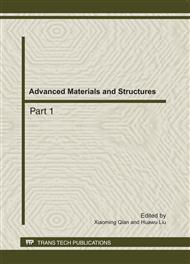p.1155
p.1159
p.1163
p.1168
p.1174
p.1181
p.1186
p.1190
p.1195
A Novel Approach of Chitosan Additive to Remove Formaldehyde from Building Materials
Abstract:
Formaldehyde (HCHO) which emitted from building materials, such as plywood and adhesive, is a carcinogenic substance in indoor air. Chitosan is produced from the structural element in the exoskeleton of crustaceans (such as crabs and shrimp), and has the ability to absorb HCHO. In this study, the HCHO removal efficiency by chitosan additives was evaluated for two building materials - adhesive and plywood. The experiments were performed in a small chamber based on the method of Japanese Industrial Standards (JIS) A1901 to evaluate the HCHO emission from adhesive and plywood before and after the application of chitosan additives. Both the HCHO concentration in the chamber and the HCHO emission factor of two adhesives, urea-formaldehyde (UF) resin and Poly Vinyl Acetate (PVAC) resin, were reduced from 0.02~0.21 ppm and 0.12~1.05 mg/m2h to 0~0.14 ppm and 0.12~0.63 mg/m2h after using chitosan additives. The best HCHO removal efficiency was adding 9% chitosan additives in the adhesives. The amount of absorbed HCHO is proportional to the amount of chitosan additives, and approximate 0.02 mg of HCHO can be absorbed by per mg of chitosan additive (i.e. absorption capacity 0.02 g HCHO/g Chitosan).
Info:
Periodical:
Pages:
1174-1180
Citation:
Online since:
September 2011
Price:
Сopyright:
© 2011 Trans Tech Publications Ltd. All Rights Reserved
Share:
Citation:


